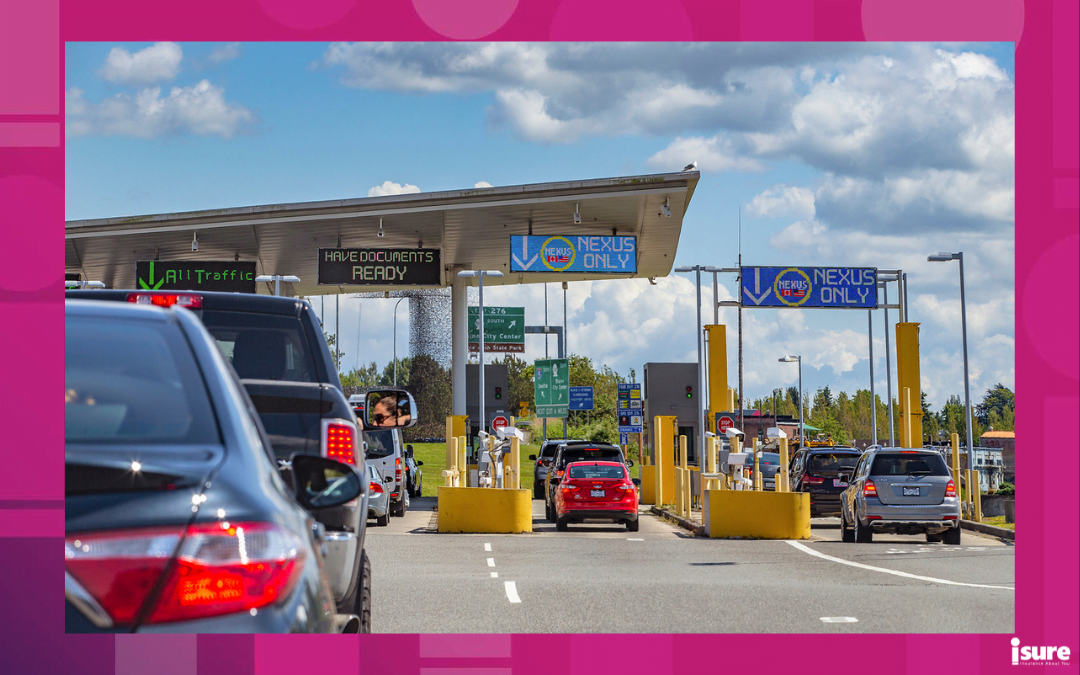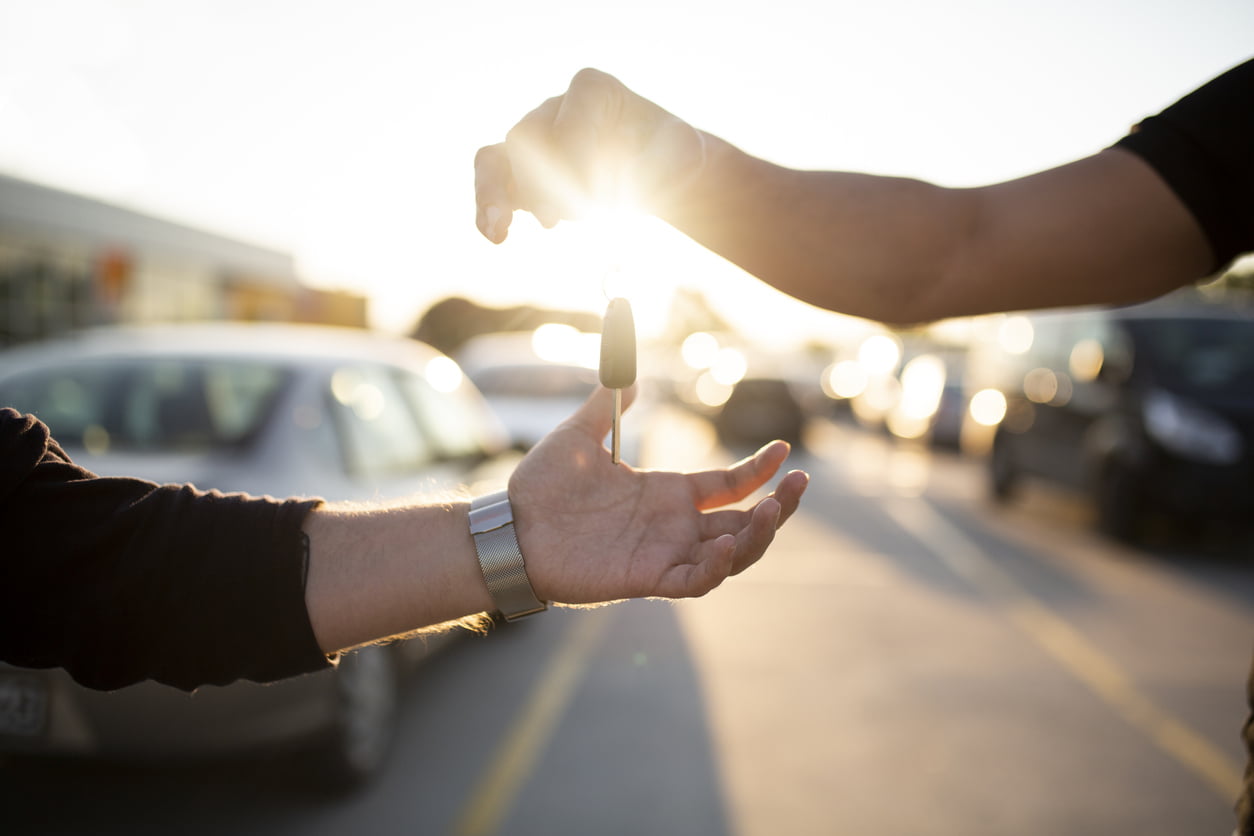Many Canadians are choosing to drive their vehicles across the US/Canadian border instead of flying. With the advent of electric and hybrid vehicles, and with recharging stations becoming more accessible, many Canadians are opting to take to the road. Whether it’s a summer road trip with the family, an overdue visit with friends, or attending a business conference, many find it more advantageous to drive across the border rather than to board a plane. But what happens if your car isn’t roadworthy, or you lack access to a vehicle entirely? Is crossing the border driving someone else’s car an option? Let’s examine the ins and outs of driving a car not registered to you across the border, and what effect it will have on the owner.
Can you cross the border in a borrowed vehicle?
In the wake of increased car theft globally since the start of the pandemic, customs officials for the U.S. and Canada are always on the lookout for stolen vehicles. Additionally, they are keeping an eye our for people trying to avoid duties on cars or trucks they purchased out of the country. As a result, alarm bells will go off anytime someone tries to cross the border in a vehicle that is not theirs. “If you wish to borrow a vehicle, you must obtain explicit permission from its owner. When crossing an international border with a borrowed vehicle, ensure you have written permission from the owner and their direct contact information in the event it’s required,” an IBC spokesperson says in an email statement.
Can I drive my friend or family member’s car in the USA?
Is it legal to drive someone else’s car? Yes, driving someone else’s car is legal as long as it is insured. In other words, if you are driving your friend’s car and an accident occurs, the expenses of the damage will be covered by your friend’s policy. However, be aware that if you are borrowing someone else’s car, you are going to be subject to closer scrutiny. Because officials are on the lookout for stolen vehicles, you may be delayed at the border if the name on the vehicle registration is different from your name. Particularly, if the car owner’s address is also different from yours.
Before you leave checklist
Crossing the border while driving someone else’s car
Firstly, you need to make sure that you have all the required documentation. According to Nationwide.com, they recommend having all the proper documentation in a secure and easy-to-reach place. This includes:
- A valid driver’s licence
- A current passport for everyone in the vehicle
- Vehicle registration
- Proof of insurance coverage
- A credit card in your name
For a complete list of acceptable documentation that denotes identity and Canadian citizenship, visit the Government of Canada’s Travel page here.
Be listed on the insurance owner’s policy
Secondly, it is very important that they have the up-to-date vehicle registration and current proof of insurance. As long as you’re listed as a secondary driver on the policyholder’s car, you’re free to drive it across the border, according to the Insurance Bureau of Canada (IBC). But you must have the vehicle owner’s permission to do so.
What is a secondary driver?
A secondary or occasional driver, is someone who uses your vehicle often, but doesn’t use it the most. These drivers also need to be on your insurance policy for that vehicle. Your insurance company will look at the driving record of the secondary driver(s), as well. Usually, your insurer charges an additional premium for that driver. This happens because the risk of an accident increases when more than one person uses the car. Anyone else who will be operating your vehicle on a regular basis should be added, regardless of whether they live with you. This includes friends, roommates, neighbours, nannies, siblings or colleagues. They will also be named drivers on the policy.
Typically, qualifying as a secondary driver on someone else’s policy means that you drive their vehicle once per week or less than 50% of the time.
Letter of Permission
Lastly, if you are planning on crossing the border driving someone else’s car, you should procure a Permission Letter. A permission letter from the owner of the vehicle you intend to take across the border can make your trip go more smoothly. This letter should include:
- The owner’s name
- Their contact information
- His or her relationship to you
- The reason that person is lending you the vehicle
- The dates you are allowed to use the car
While there is no legal requirement for a permission letter, both the U.S. and Canadian border services suggest you have one. Having a permission letter on-hand helps to avoid any suspicion. A written consent letter from the car owner, as well as proof of insurance and registration, is crucial in order to cross the border with as little hassle as possible.
To view a sample of a permission letter, please click here.
Check your car insurance coverage before driving someone else’s car
Before you go on any trip that will take you out of the country, double check with your isure representatives to make sure you have the right coverage. Your Canadian driver’s licence is legal in the U.S. However, if you’re driving your car across the border, your Canadian car insurance coverage may not be valid. This means you may need to buy additional short-term auto insurance policy for your car. The U.S. has a significantly higher rate of uninsured motorists than Canada, at 12.6%. If your vehicle does not have uninsured motorist coverage, it might be a smart choice to pick up additional protection before you cross the border.
In Ontario, the minimum coverage for civil liability is $200,000 and its valid anywhere in Canada or the United States. However, it’s recommended that you carry up to $2 million when travelling south of the border because of the higher risk of lawsuits following an accident.
How will damage to Canadian vehicles be covered?
Most Canadian insurance providers will extend full coverage auto insurance across the border if you already carry it at home. Double-check with your isure broker, though, to make sure that this is true of your specific car insurance policy. Take note that if you do not have collision coverage or comprehensive insurance as part of your Canadian plan, you also won’t have it when travelling in the U.S. Make sure to add these coverages if you’re worried about potential environmental damages and issues caused by theft or vandalism.
Can I drive a rental car over the border?
Is driving someone else’s vehicle across the border that you do not own allowed in the first place? Yes. Generally, you can drive a rental vehicle across the border. You should inform your car rental company that you will be crossing the border. They will inform you of their individual policies. It is best that you keep a copy of the rental agreement with you in the car.
Please note: Canadians may not drive a U.S-owned rental car into Canada.
Canadians often think they have to get separate car insurance when they plan a road trip across the U.S. The truth is that Canadian auto insurance is valid in the U.S. most of the time due to the countries sharing similar legal systems. However, if you are crossing the border driving someone else’s car, it’s important to make sure you take note of our recommendations. At isure, our experienced staff can help you navigate the right amount of coverage to help you ride into a smooth road trip south of the border.




